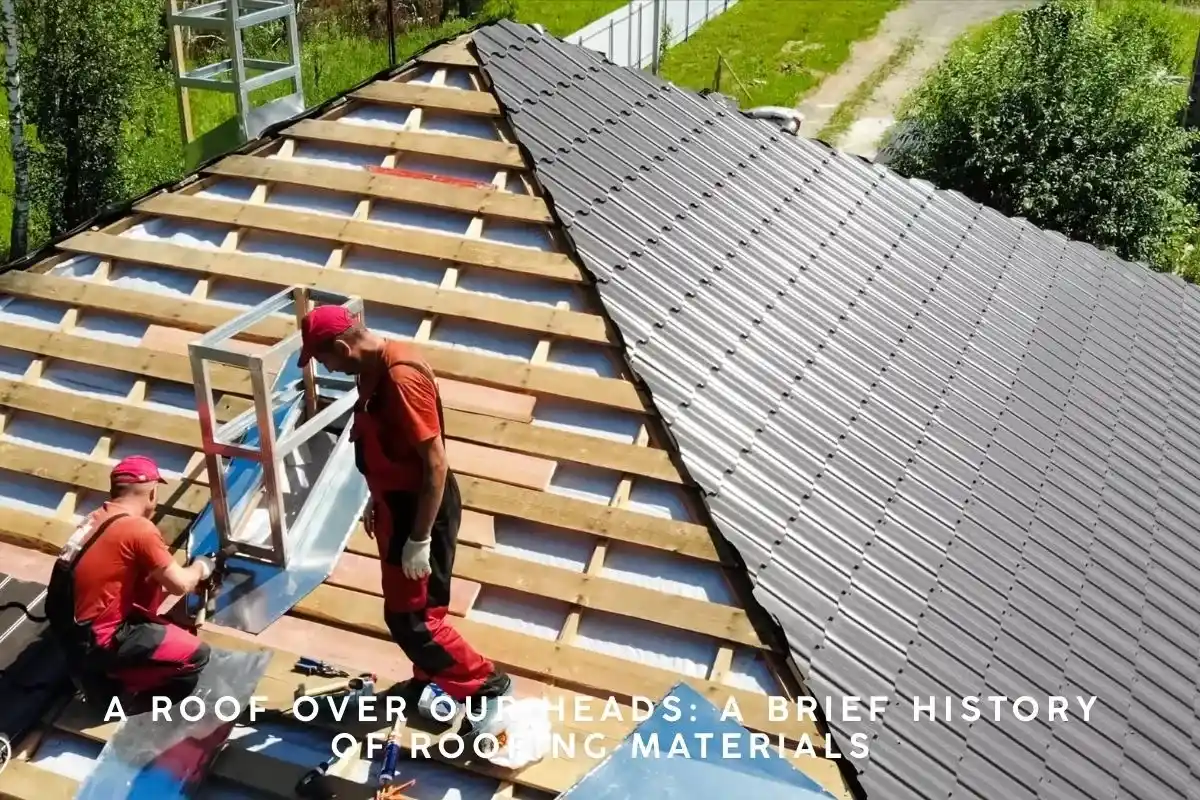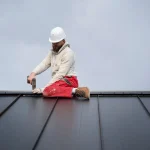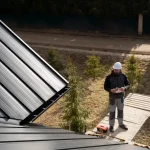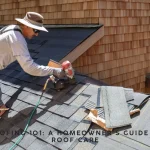From the earliest human shelters to the modern skyscrapers, the evolution of roofing materials has been a fascinating journey. Let’s take a look at some of the most significant milestones in roofing history.
Early Beginnings: Thatch and Mud
The earliest forms of roofing were simple and often consisted of natural materials like thatch or mud. Thatch, made from dried grasses or reeds, offered basic protection from the elements. Mud roofs, often mixed with straw or other organic materials, were common in many ancient civilizations.
The Rise of Durable Materials: Tile and Slate
As civilizations advanced, so did roofing materials. Clay tiles and slate became popular choices due to their durability and aesthetic appeal. Roman roof tiles, for example, were renowned for their intricate designs and long-lasting quality. Slate roofs, particularly popular in Europe, offered excellent protection against harsh weather conditions.
The Industrial Revolution and Metal Roofs
The Industrial Revolution brought about significant advancements in roofing technology. Metal roofing materials, such as tin, copper, and galvanized steel, became more widely used. These materials were durable, lightweight, and often required less maintenance than traditional materials like thatch or tile.
The 20th Century: Asphalt Shingles and Beyond
The 20th century saw a surge in the popularity of asphalt shingles. These affordable and versatile roofing materials quickly became the industry standard. However, as concerns about environmental impact and energy efficiency grew, new materials and technologies emerged.
- Metal Roofing: Modern metal roofs, made from materials like aluminum, steel, and copper, are known for their durability, energy efficiency, and aesthetic appeal.
- Tile Roofing: Clay and concrete tiles continue to be popular choices, especially in regions with Mediterranean climates.
- Synthetic Roofing Materials: These materials, such as synthetic slate and polymer-modified bitumen shingles, offer a range of benefits, including durability, fire resistance, and energy efficiency.
The Future of Roofing: Sustainable and Innovative
As we move forward, the future of roofing is likely to be shaped by sustainability and innovation. Sustainable roofing materials, such as solar tiles and green roofs, are gaining popularity. Additionally, advancements in technology are leading to the development of smart roofing systems that can monitor and control energy usage.
How to Choose the Right Roofing Material
Understanding Your Needs:
- Climate: Consider your local climate. For areas with heavy snowfall, a durable and impact-resistant material like metal or asphalt shingles is ideal. In areas with high winds, consider metal or tile roofing.
- Aesthetics: Choose a material that complements your home’s architectural style.
- Budget: Different roofing materials have varying costs. Consider your budget when making a decision.
- Durability: Look for materials that are resistant to weather damage, pests, and mold.
- Energy Efficiency: Energy-efficient roofing materials can help reduce your energy bills.
Popular Roofing Materials:
- Asphalt Shingles: Affordable, versatile, and widely available.
- Metal Roofing: Durable, energy-efficient, and low-maintenance.
- Tile Roofing: Classic, aesthetically pleasing, and highly durable.
- Slate Roofing: Elegant and long-lasting, but expensive.
- Wood Shingles and Shakes: Natural look and feel, but require regular maintenance.
Benefits of Choosing the Right Roofing Material:
- Increased Home Value: A well-maintained roof can significantly increase your home’s value.
- Energy Efficiency: Energy-efficient roofing materials can help reduce your energy bills.
- Protection from the Elements: A durable roof can protect your home from harsh weather conditions.
- Aesthetic Appeal: The right roofing material can enhance your home’s curb appeal.
Frequently Asked Questions (FAQs):
Q: How often should I inspect my roof?
A: It’s recommended to inspect your roof at least twice a year, especially before and after severe weather events.
Q: What are the signs of a damaged roof?
A: Signs of a damaged roof include missing or damaged shingles, leaks, water stains on the ceiling, and excessive granules in your gutters.
Q: How long does a typical roof last?
A: The lifespan of a roof depends on the material, climate conditions, and maintenance. Asphalt shingles typically last 15-20 years, while metal roofs can last 50 years or more.
Q: What is the best roofing material for energy efficiency?
A: Metal roofs are known for their excellent energy efficiency. They reflect sunlight, reducing heat gain in the summer and retaining heat in the winter.
Q: How can I reduce the cost of a new roof?
A: Consider using recycled materials, opting for a basic shingle design, and timing your roof replacement to avoid peak season prices.
By carefully considering these factors and consulting with a roofing professional, you can choose the right roofing material to protect your home and enhance its curb appeal.
A Personal Anecdote
I remember helping my grandfather repair a leaky roof on his old farmhouse. We used a combination of traditional materials and modern techniques to fix the problem. It was a rewarding experience, and it gave me a deeper appreciation for the craftsmanship and ingenuity involved in roofing.
By understanding the history of roofing, we can better appreciate the advancements that have been made and the challenges that lie ahead. As we continue to explore new materials and technologies, we can create more sustainable, resilient, and beautiful roofs for generations to come.
Would you like to know more about specific roofing materials or techniques, or perhaps delve into the history of a particular roofing style?









